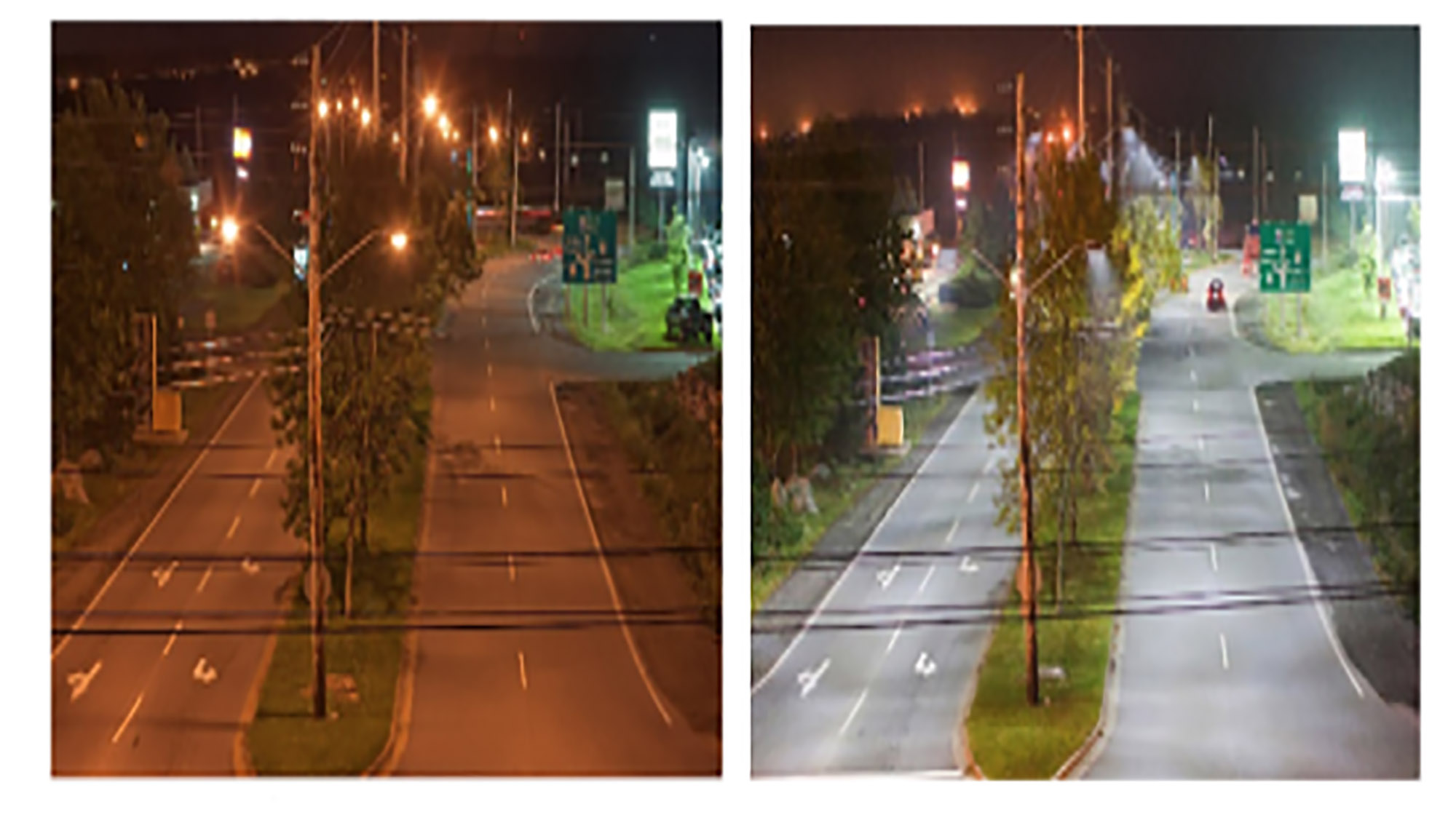Auditor general shines a light on LED conversion project
Old street lights were replaced with LED lights by 2017

caption
HRM intersection before and after LED streetlights were installed.Halifax’s auditor general says the municipality needs to get better at project planning to keep the costs and timelines of major projects controlled.
Evangeline Colman-Sadd presented her report on the LED street light conversion project to the audit and finance committee on Wednesday. Her audit found that the project was effective, but came with issues.
“The role of IT was not clearly defined during planning,” said Colman-Sadd.
Despite the project having a large technological component, these costs weren’t considered until after the contract was final because a comprehensive risk assessment was not done. Colman-Sadd recommended HRM develop a comprehensive risk assessment for planning significant capital projects, along with a policy for files to assign responsibility and understand what documents need to be in the records. Related stories
HRM’s decision to convert to LED street lights goes all the way back to 2012, when the provincial government mandated all roadways in Nova Scotia to have LED streetlights by 2022.
The Halifax LED project, which began installation in 2015, replaced high-pressure sodium street lights with LED lights. LED technology is energy efficient, has longer lifespans and requires less maintenance. It was estimated in 2015 that the conversion to LEDs would save HRM about $5 million a year.
Some residents complained that the brightness of the LED lights are disruptive to drivers and those who live next to the lights.
The project was completed six months late due to delays caused by clarifying contract clauses, street light inventory inconsistencies and other issues. The total cost was $49.6 million, approximately four per cent over the projected budget. Due to this, it’s expected to take 12 years to pay the costs, two more than projected.
In regards to the total cost, Coun. Matt Whitman was glad the increase was just four per cent.
“To come within four per cent of the budget is remarkable for us,” he said.
Whitman said the lights are brighter and safer and extend farther into the street, allowing for better visibility.
“I was a little disappointed to hear that one of the things that I was most excited about, the ability to dim the lights, didn’t come to fruition,” said Whitman.
Originally the project aimed to have dimmable street lights to save energy. Colman-Sadd said HRM complies with regulations from the American National Standard Practice for Roadway Lighting, which prevent dimming.
Whitman asked if fixing the lights remotely is part of the solution, as he’s seen these lights “flickering in almost a strobe-like fashion.”
The auditor general did not have an answer, and said that was something Whitman would have to confirm with management.
Coun. Lorelei Nicoll asked if HRM has an inventory of all street lights so they could develop a policy with that.
Colman-Sadd said an issue that contributed to the delay was that there wasn’t a “great” inventory of all street lights, but that there is now.
“That recommendation really relates to the fact that there was some information that just couldn’t be located when we were trying to do the audit,” said Colman-Sadd. “We’ve had a few instances now in different audits where there’s been difficulty locating information because it hasn’t been in a central file.”
Both of her recommendations in the audit, Colman-Sadd said, have been accepted and will be checked up on in 18 months.
About the author
Madeline Biso
Madeline Biso is a student journalist at University of King's College. Her main interests are investigative and data-driven stories. When not...

A
Adrian